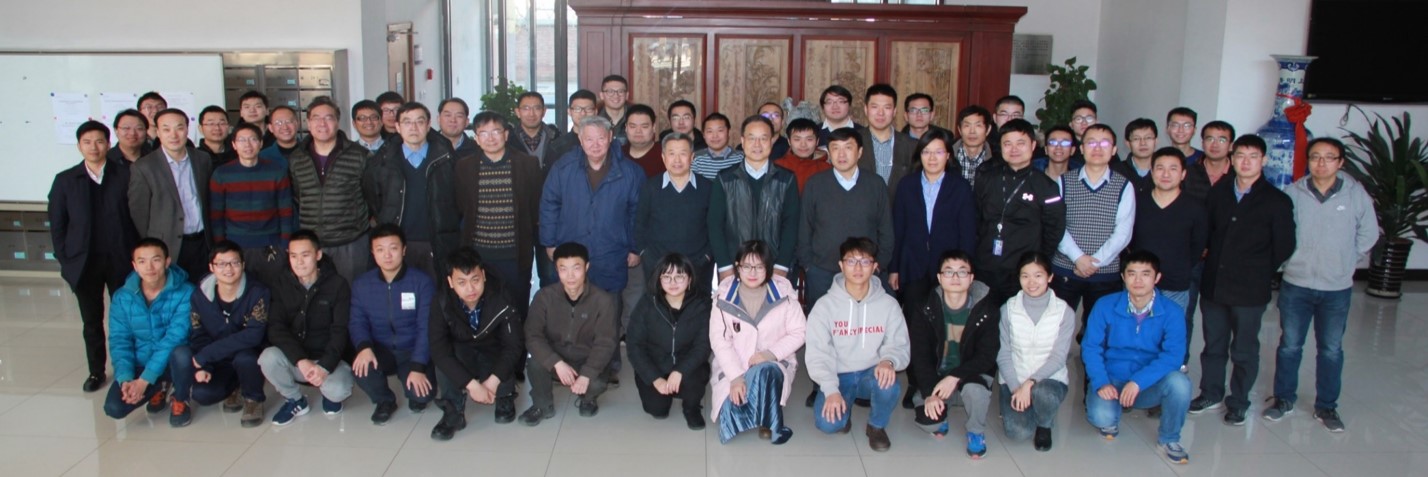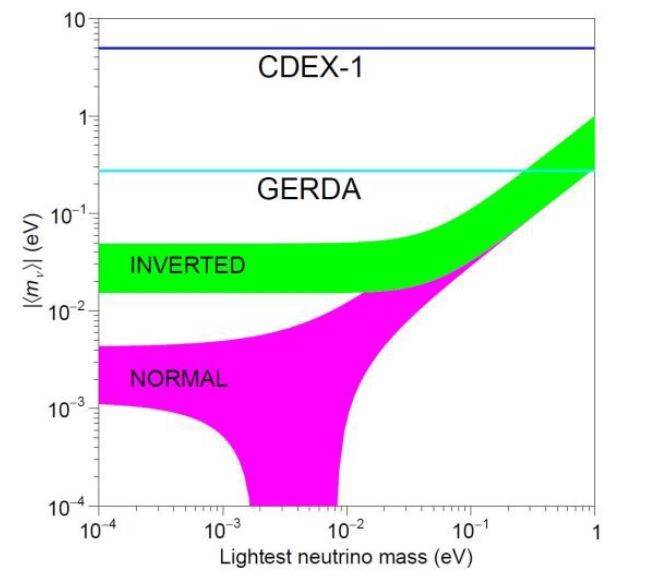The China Dark Matter Experiment (CDEX) is the first experiment to be hosted at CJPL, aiming at direct searches of light WIMPs with the p-type point contact germanium (pPCGe) detectors, which have excellent energy resolution and a low energy threshold. The long-term goal of the CDEX program will be a ton-scale germanium experiment (CDEX-1T) at CJPL for the searches of dark matter and the neutrinoless double beta decay (0vββ). A pit of diameter 18 m and height 18 m will be built at one of the halls of CJPL-Phase II to house such an experiment.
The CDEX collaboration was initiated by Tsinghua University and began in 2009. The CDEX collaboration comprises the following institutions and organizations: Tsinghua University, Sichuan University, Nankai University, Beijing Normal University, Peking University, Sun Yat-sen University, the China Institute of Atomic Energy, the Yalong River Hydropower Development Company, and the TEXONO Collaboration based at Academia Sinica, Taipei.

Figure 1. Group photo of the CDEX collabration
Dark matter is a hypothetical form of matter that is thought to account for approximately 85% of the matter in the universe, and about a quarter of its total energy density. The name dark matter refers to the fact that it does not appear to interact with observable electromagnetic radiation, such as light, and is thus invisible (or 'dark') to the entire electromagnetic spectrum, making it extremely difficult to detect using usual astronomical equipment.
If dark matter is made up of sub-atomic particles, then millions, possibly billions, of such particles must pass through every square centimeter of the Earth each second. Many experiments aim to test this hypothesis. Although WIMPs are popular search candidates, the Axion Dark Matter Experiment (ADMX) searches for axions. Another candidate is heavy hidden sector particles that only interact with ordinary matter via gravity.
These experiments can be divided into two classes: direct detection experiments, which search for the scattering of dark matter particles off atomic nuclei within a detector; and indirect detection, which look for the products of dark matter particle annihilations or decays.
Direct detection experiments aim to observe low-energy recoils (typically a few keVs) of nuclei induced by interactions with particles of dark matter, which (in theory) are passing through the Earth. After such a recoil the nucleus will emit energy as, e.g., scintillation light or phonons, which is then detected by sensitive apparatus. To do this effectively it is crucial to maintain a low background, and so such experiments operate deep underground to reduce the interference from cosmic rays. Examples of underground laboratories with direct detection experiments include the Stawell mine, the Soudan mine, the SNOLAB underground laboratory at Sudbury, the Gran Sasso National Laboratory, the Canfranc Underground Laboratory, the Boulby Underground Laboratory, the Deep Underground Science and Engineering Laboratory and the China Jinping Underground Laboratory.
Indirect detection experiments search for the products of the self-annihilation or decay of dark matter particles in outer space. For example, in regions of high dark matter density (e.g., the centre of our galaxy) two dark matter particles could annihilate to produce gamma rays or Standard Model particle-antiparticle pairs.
In nuclear physics, double beta decay is a type of radioactive decay in which two protons are simultaneously transformed into two neutrons, or vice versa, inside an atomic nucleus. As in single beta decay, this process allows the atom to move closer to the optimal ratio of protons and neutrons. As a result of this transformation, the nucleus emits two detectable beta particles, which are electrons or positrons.
The literature distinguishes between two types of double beta decay: ordinary double beta decay and neutrinoless double beta decay. In ordinary double beta decay, which has been observed in several isotopes, two electrons and two electron antineutrinos are emitted from the decaying nucleus. In neutrinoless double beta decay, a hypothesized process that has never been observed, only electrons would be emitted.
Numerous experiments have searched for neutrinoless double beta decay. The best-performing experiments have a high mass of the decaying isotope and low backgrounds, with some experiments able to perform particle discrimination and electron tracking. In order to remove backgrounds from cosmic rays, most experiments are located in underground laboratories around the world.
Recent and proposed experiments include: COBRA( 116Cd), CUORE( 130Te), EXO(136Xe), GERDA( 76Ge), XMASS(136Xe), and so on.

Figure 2. Spectrum without efficiency correction in the region of interest for the 0νββ decay, the red dash line corresponds to 90% C.L. upper limit derived in this work superimposed the fitted background.

Figure 3. Upper limits on the effective Majorana-neutrino mass from this work and Gerda Collaboration.
In 2017, CDEX reports the first result on 76Ge neutrinoless double beta decay from CDEX-1 experiment at China Jinping Underground Laboratory. A mass of 994 g p-type point-contact high purity germanium detector has been installed to search the neutrinoless double beta decay events, as well as to directly detect dark matter particles. An exposure of 304 kg∙day has been analyzed. The wideband spectrum from 500 keV to 3 MeV was obtained and the average event rate at the 2.039 MeV energy range is about 0.012 count per keV per kg per day. The half-life of 76Ge neutrinoless double beta decay has been derived based on this result as: T0v1/2>6.4╳ 10-22 yr (90% C.L.). An upper limit on the effective Majorana-neutrino mass of 5.0 eV has been achieved. The possible methods to further decrease the background level have been discussed and will be pursued in the next stage of CDEX experiment.